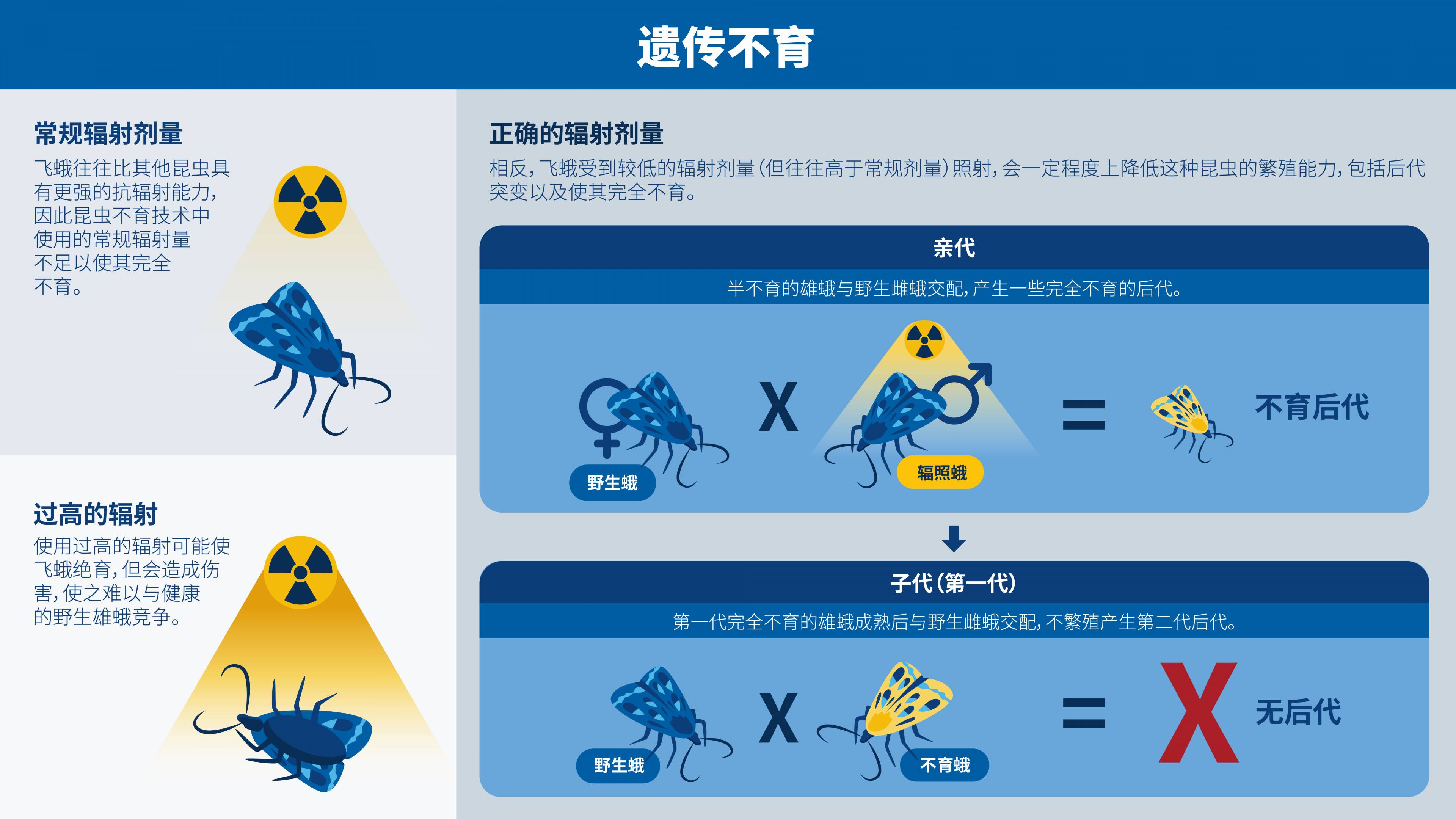What is Inherited Sterility?
Inherited sterility, also known as F1 sterility, is another type of SIT, very similar to the traditional method, as it involves rearing, irradiation and release of semi-sterile male insects into a target area to reduce the mating of their fertile counterparts. In this technique, however, the reared and released male insects have a certain degree of fertility, but all their offspring is born sterile.
This technique is used when males of particular types of pests, such as moths, cannot be fully sterilized unless very high doses of radiation are used. A high dose, however, may weaken the insect and hinder its ability to compete with wild moths for reproduction. Therefore, this technique involves using much lower and less debilitating doses, which do not hinder the insects’ opportunities to reproduce, but which induce inherited sterility in the moths' offspring.
This technique has a number of advantages. It enables the scientists to target species that require very high doses of irradiation to become sterile. However, the females are fully sterile after irradiation, since female moths tend to be more sensitive to radiation. The irradiated males are only partially sterile and give birth to fully sterile offspring. The release of partially sterile males with inherited sterility, often helps to suppress wild populations to a greater extent than an equal number of fully sterile males released in conventional SIT, since the males can produce multiple fully sterile copies in the next generation.








